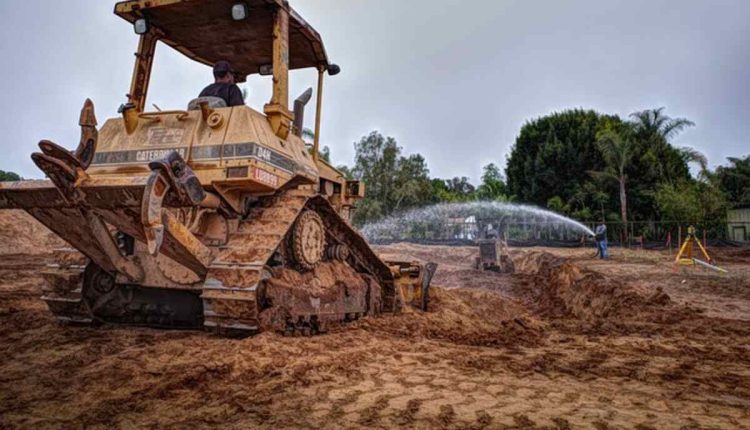How to Dispose of Demolition Material Properly
Demolition material differs significantly from regular trash and must be handled carefully and disposed of responsibly while saving both money and helping the environment. This article will show you how to safely dispose of demolition waste while also keeping both money and helping save the planet. Choose the best Demolition Contractor Santa Fe.
Many materials used in building or remodeling can be recycled for reuse. Sorting C&D debris to allow recycling can lead to significant cost savings while being better for the environment than sending all this garbage directly to a landfill or another facility.
Material handlers
If you work in demolition, chances are you need to transport materials that are too large for traditional scrapyard machinery and may also contain sharp or corrosive substances that pose potential safety risks – these materials require specialist training and equipment for transport; as such, professional material handlers are needed in order to transport such hazardous items. To be on the safe side when transporting these types of materials.
Material handlers are invaluable assets to many industries, especially warehousing, manufacturing, and construction businesses. These businesses deal with potentially hazardous chemicals and metals that require special handling equipment, such as material handlers, to transport safely.
Material handling jobs require not only being able to manage large volumes of potentially hazardous materials safely but also reading and following inventory records and using company software. While you don’t require a formal college education to become a material handler, certification in HAZMAT safety, forklift operations, or inventory management could increase your chances of employment and be helpful – certificates such as HAZMAT safety can boost employment chances significantly.
Deconstruction, or carefully dismantling buildings, can help salvage valuable materials for recycling and reuse, saving both money and conserving finite natural resources while creating economic activity and job opportunities locally. Deconstruction has proven wildly successful in urban environments like Detroit, where it has cleared away abandoned houses that have blighted neighborhoods.
Wrecking balls
Most people associate demolition with using a wrecking ball; however, its usage has diminished with better methods that save both labor costs and reduce site waste.
A wrecking ball is an enormous steel sphere suspended from a crane. Its tremendous weight can bring down many structures as its gravitational potential energy gets converted to motion when the ball swings back and forth.
Under certain conditions, this technique can be one of the most efficient demolition strategies. Commonly used with concrete and masonry structures, a wrecking ball is either swung into or dropped onto it repeatedly through multiple blows until destruction has taken place. This approach to demolition has proven more successful than one sudden destructive blast.
Demolition projects can be costly, time-consuming, and hazardous to workers’ health. Therefore, it is paramount to select the appropriate method for each project. Options include implosion and hydraulic excavators, as well as the traditional use of explosives.
Hammers
Demolition hammers are powerful tools used to break apart concrete surfaces, walls, and tile flooring in construction-based projects to save time by reducing manual labor requirements. The right demolition hammer must be chosen for your task; there are various types on the market with individual designs and features to consider.
Breaker hammers are one of the most frequently employed demolition hammers. Relying on pure percussion shock to fracture and split materials without cutting, they’re great for breaking up old, thick concrete structures as well as breaking down chimneys or roofs without cutting through them. Although suitable for use on most sites due to potential impact with gas or electrical lines, breaker hammers shouldn’t always be used due to possible potential injuries sustained from hitting such lines during use.
Chipping hammers are essential demolition hand tools. More precise than their counterpart, they’re used in tight spaces with greater accuracy than breaker hammers; their long handle gives greater reach when working near doors and windows; plus, they can even remove small sections of concrete in walls and floors as well as tile flooring!
Expansive demolition agents are non-toxic powders that can be safely and effectively applied to concrete slabs by pouring or tamping. Once hardened and expanding, the expansive demolition agent breaks apart the slab’s foundation faster and safer than traditional methods.
Material haulers
Demolition projects often produce large volumes of waste, including pieces of building materials and plumbing fixtures that need to be transported for disposal, which is difficult when done by hand. A dump truck can make transporting construction waste easier; its large storage capacity and recyclable capabilities also make it perfect for recycling projects.
In 2018, over 600 million tons of C&D debris was generated in the US, of which 90 percent was from demolition activities. While some can be used as aggregate, most are sent directly to landfills – making deconstruction and salvage viable alternatives to demolition.
Recycling construction and demolition waste can save money on disposal costs while decreasing resource needs. It also benefits the environment and local communities. To maximize recycling success, it’s crucial that before beginning a project, it is identified which materials may be diverted for reuse through engineering estimates, material purchasing records, or previous waste disposal data.
Contractors should plan by including dumpster staging in their project plans and timeline to maximize source separation. For instance, during larger renovation projects, containers might be placed for ABC debris during demolition, one for gypsum wallboard cut-offs during drywalling, and finally, one for cardboard waste during finish material installations – each to be collected and transported directly to a mixed C&D processor when completed.

